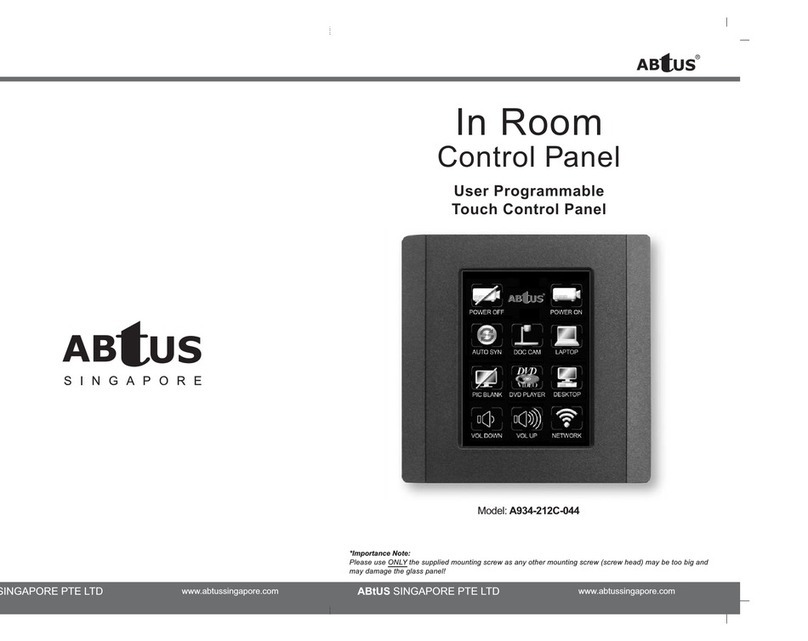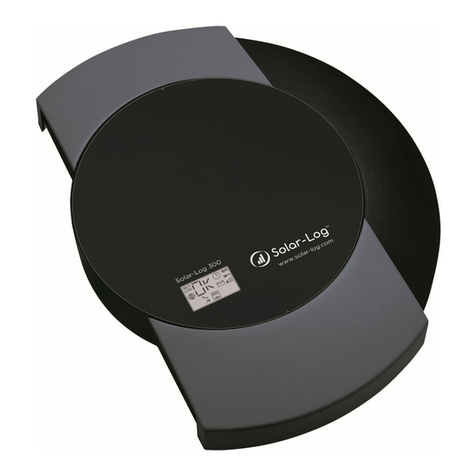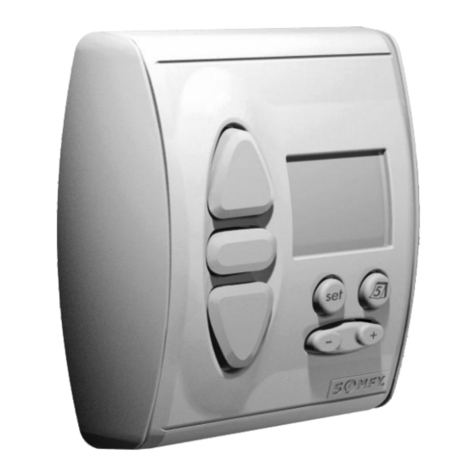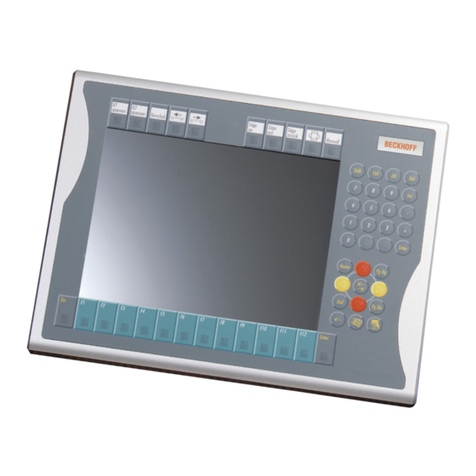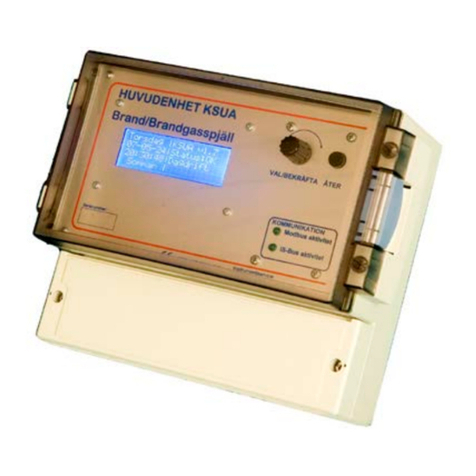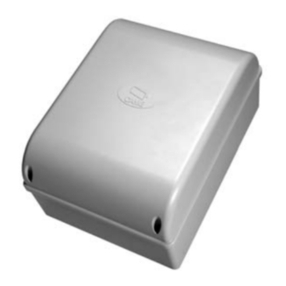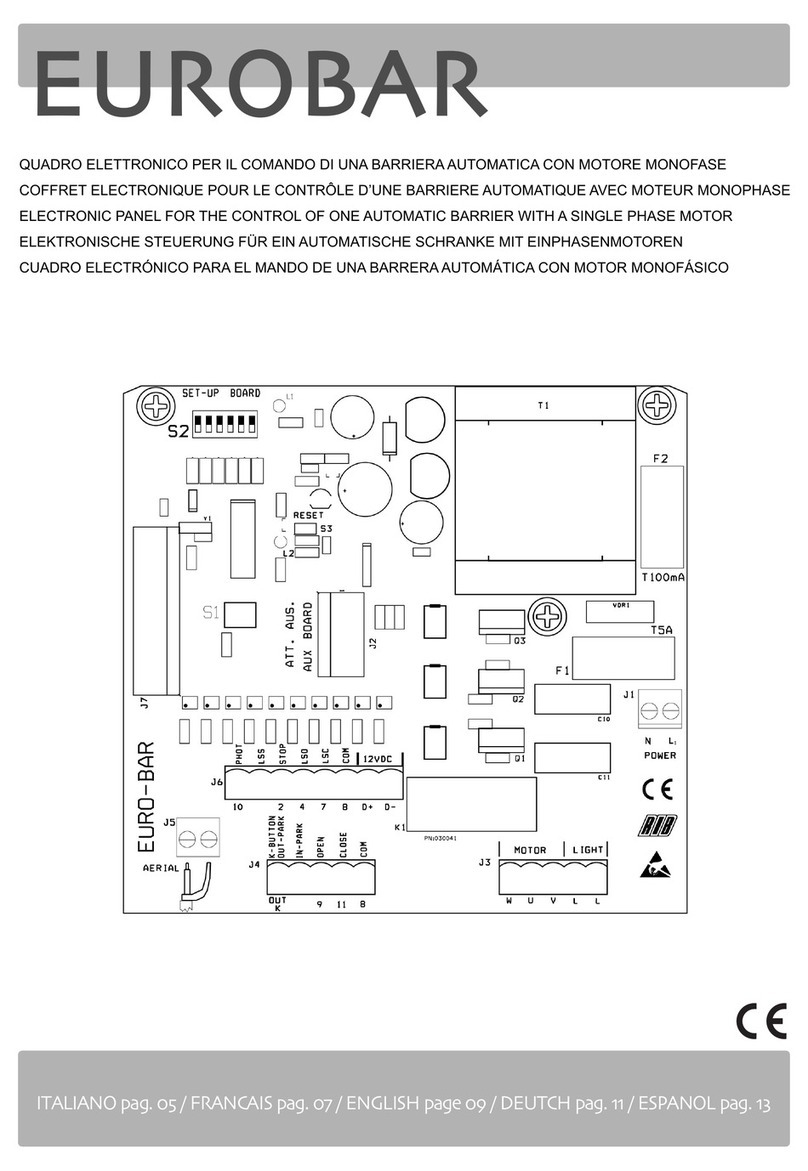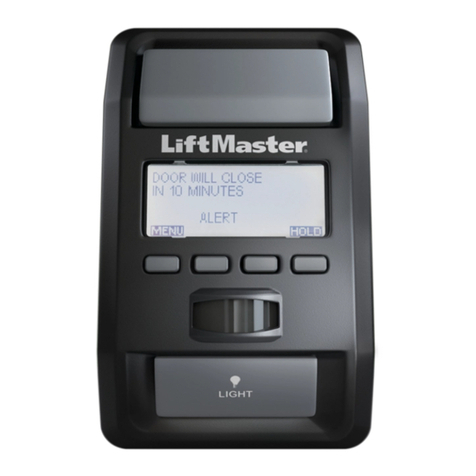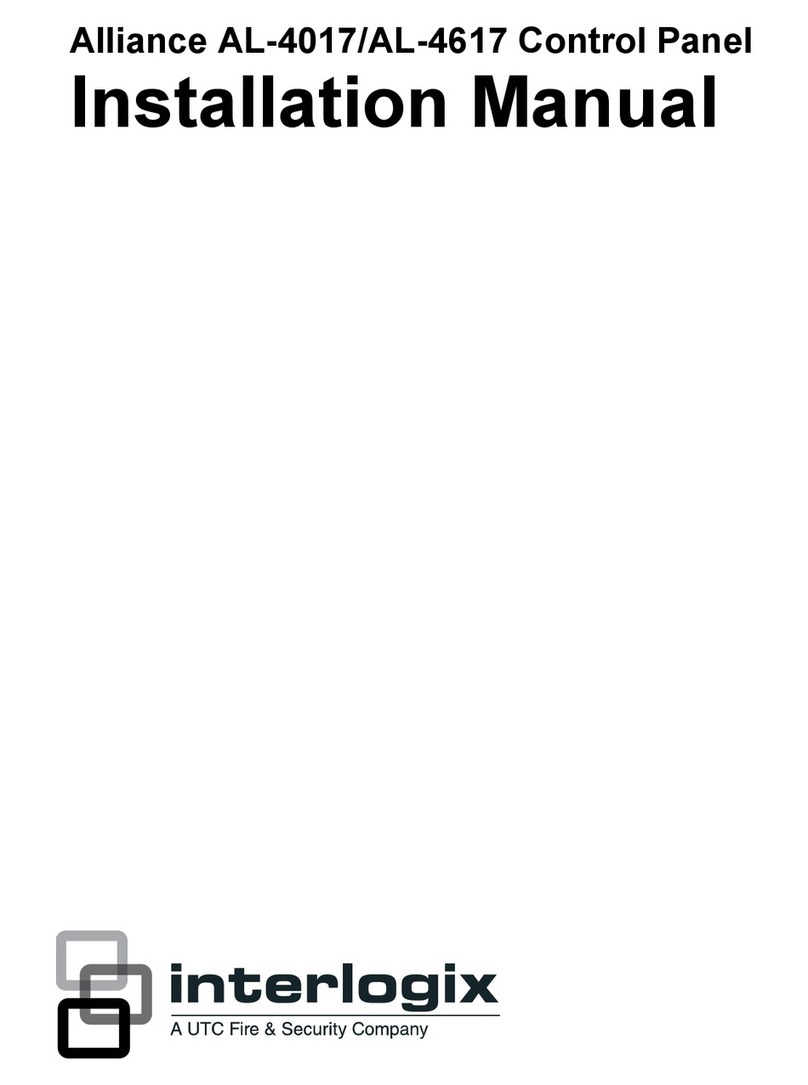heat-timer EPU-D User manual

059840‐00Rev.A
Installation and Operation Manual
EPU-D
Light Commercial Steam Cycling Control
WARNING
This Heat-Timer control is strictly an operating control; it should never be used as a primary limit or safety
control. All equipment must have its own certified limit and safety controls required by local codes. The installer
must verify proper operation and correct any safety problems prior to the installation of this Heat-Timer control.

TableofContents
059840‐00Rev.AHeat‐TimerCorp.
2
Controls,Indicators,andConnections ............ 3
DetailedOperation............................4
Overview..................................4
The“Cycle”Concept ........................4
CycleLengthBasedonOutdoorTemperature .4
CycleLength ............................5
AvailableHeatLevels ..................... 7
SequenceofOperation...................... 7
TypicalConfigurations ....................... 8
EPU‐DInputs...............................8
HeatingSystemSensor ....................8
PressuretrolSensor.......................8
OutdoorTemperatureSensor..............8
RemoteShutdown/TSTATEnable..........9
EPU‐DOutputs .............................9
ValveActuator...........................9
BoilerBurner ............................9
Specifications ...............................10
EPU‐DControlModule .....................10
InstallationInstructions.......................11
SuppliedMaterials .........................11
RequiredMaterials(NotSupplied) ............11
DesignConsiderations ......................11
OutdoorTemperatureSensorInstallation...12
HeatingSystemSensorInstallation .........13
MountingtheEPU‐DModule................14
MountingtheEnclosure ..................14
MountingtheDisplayModule .............15
WiringtheEPU‐D ..........................16
PowerInputWiring......................16
OutputWiring..........................16
InputWiring............................18
Powering‐OntheEPU‐D ..................19
CompletingtheInstallation...............19
InitialProgrammingoftheEPU‐D.............20
SystemStartupMenu ....................20
EPU‐DDisplayandProgramming...............23
EPU‐DControlModuleStatusLEDs ...........23
DisplayandVariable‐FunctionButtons ........23
DefaultDisplay .........................24
DisplayIconsandMessages...............24
SettingtheDisplayContrast...............25
ResettingtoFactoryDefault .................25
EPU‐DMenus ............................ 26
MainMenu............................ 26
SystemSettingsMenu................... 29
SchedulesMenu........................ 33
MaintenanceMenu ..................... 35
PipingDiagrams............................. 38
Troubleshooting ............................ 41

Controls,Indicators,andConnections3
059840‐00Rev.AHeat‐TimerCorp.
Controls,Indicators,andConnections
Figure1: EPU‐DControls,Indicators,andConnections
Item Description Item Description
1 StatusLEDs
See“EPU‐DControlModuleStatusLEDs”on
page 23.
5 Prgm/RunSwitch
PlacestheEPU‐Dinprogrammingmodeorrun
(normaloperation)mode.
NOTE:Programmingmodemaybepassword
protected.
2 DigitalDisplay
See“DisplayandVariable‐FunctionButtons”on
page 23.
6 OutputConnections
• Terminals4&5–notused
• Terminals6,7,&8–OutputtoBoiler
BurneroraMotorizedValve
3 Variable‐FunctionButtons
See“DisplayandVariable‐FunctionButtons”on
page 23.
7 120VacPowerInputConnection
• Terminal1–InputLineVoltage
• Terminal2–Neutral
• Terminal3–Ground
4 InputConnections
• Terminals9&10–HeatingSystemSensor
• Terminals11&12–OutdoorTemperature
Sensor
• Terminals13,14,15,&16–notused
• Terminals17&18–RemoteShutdown
12
3
7 456

4EPU‐DInstallationandOperationManual
059840‐00Rev.A Heat‐TimerCorp.
DetailedOperation
Overview
TheEPU‐Disamicroprocessor‐basedcontroldesignedtomanagealow‐pressuresteamheatingsystem.The
controlcanoperateasteamboileroratwo‐waysteamvalveusinga“cycle”concepttoprovidethedesired
amountofheattothebuilding.
The“Cycle”Concept
The“cycle”conceptwascreatedbyHeat‐Timerspecificallytoallowsteamheatingsystemstoovercomethe
inabilitiesofstandardthermostaticcontrolstocopewiththeuniquechallengesoflow‐pressuresteamheating.
Unlikewaterandairsystems,steamsystemstaketimetobuildupa“headofsteam”.Moreover,afterthe
systemstartsheatingup,ithasmomentumthattakestimetodissipate.Thismakesitdifficulttocontrolits
temperature.
CycleLengthBasedonOutdoorTemperature
Bymonitoringtheoutdoortemperature,theEPU‐Disabletoanticipatethebuildingheatingneeds.Eachcycle
period(usually60minuteslong,butadjustabledependingonthetypeofradiationunits)consistsofaCycle‐ON
segmentandaCycle‐OFFsegment.ThelengthoftheCycle‐ONsegmentwillvarywiththeoutdoor
temperature.Thecolderitisoutdoor,thelongertheCycle‐ONsegment.
Figure2: Example60MinuteCycle
TheEPU‐Dconstantlycheckstheoutdoortemperaturebymeansofasolid‐statesensorlocatedontheexterior
ofthebuilding.Atthesametime,itmonitorstheheatingsystemofthebuildingbymeansofeitheraheating
systemsensororreverse‐actingpressuretrol.Thesesensorstellthecontrolwhensteamhasreachedthe
furthestlocationinthebuilding(orthehardesttoheatarea,see“PipingDiagrams”onpage 38).Basedonthis
combineddata,theEPU‐Dsendsinstructionstotheheatingplanttocontroltheheatlevelinthebuilding.
TheEPU‐Dalsoprovidestwoadjustableoutdoortemperaturecutoffsettings,onefordaytimeoperationand
onefornighttimeoperation.Whentheoutdoortemperaturerisesaboveoneofthecutoffsettings,theEPU‐D
willnotcallforanyheat.

DetailedOperation5
059840‐00Rev.AHeat‐TimerCorp.
Whentheoutdoortemperaturedropsbelowthecutoff,theEPU‐Dwillautomaticallybegincontrollingthe
heatingcycle.Aftertheheatingsystemisactive,theheatingsystemsensorwillregisterwhenheathasreached
throughoutthebuilding.Thecombinedeffectofthesetwosensorsistoprovideaneven,comfortablelevelof
heatthroughoutthebuilding.
Figure3: ExampleCyclesBasedonWeatherConditions
CycleLength
ThedurationoftheCycle‐ONperiod(whentheheatsourceisactivated)dependsonfourfactors:
• Outdoortemperature
• OutdoorCutofftemperature
• HeatAdjustmentsetting
•Cyclelength
WhentheoutdoortemperatureisabovetheOutdoorCutoff,theEPU‐Dwillnotcallforheat.Whentheoutdoor
temperatureisbelowtheOutdoorCutoff,thelengthoftheCycle‐ONsegmentisadjustedbythedayandnight
HeatAdjustmentsettings.“A”istheshortestheatduration,“P”isthelongestduration.

6EPU‐DInstallationandOperationManual
059840‐00Rev.A Heat‐TimerCorp.
Table1:CycleLengthTable
*HeatAdjustmentSetting–See“DayAdjustment”onpage 30and“NightAdjustment”onpage 30.
Example
Todeterminethecyclelength,usetheexamplevaluesbelow:
• Outdoortemperature=30°F
• OutdoorCutoff=55°F
• HeatAdjustment=G
1. SubtracttheoutdoortemperaturefromtheOutdoorCutoff(55–30=25°F)
2. RefertoTable 1wheretheHeatAdjustmentrow“G”intersectswiththe25°Fcolumn.TheCycle‐ONtimeis
14minutes(fora60minutecycle).
NOTE:Fordifferentcyclelengths,refertothetablebelow:
OutdoorCutoffMinusOutdoorTemperature(AllTemperaturesin°F)
*95 90 85 80 75 70 65 60 55 50 45 40 35 30 25 20 15 10 5 1
A45 41 37 33 29 25 22 18 15 13 10 8 5 3 200000
B57 51 46 41 37 33 28 25 21 18 15 12 9 7 531000
CC 595448433833292521181512 9 753100
DC C C 5549433834292521171411 964210
EC C C C 55 49 43 38 33 28 24 20 17 13 1086421
FCCCCC5549433732272319151297532
GCCCCCC54 48 42 36 31 26 22 18 14 11 8 6 4 3
HCCCCCCC5347403529252016 13 10 7 5 4
ICCCCCCC5952453933272318 15 11 9 6 5
JCCCCCCCC58504337312521 16 13 10 7 6
KCCCCCCCCC564841342823 19 15 11 8 7
LCCCCCCCCCC5345383226 21 16 13 9 7
MCCCCCCCCCC5951433529 23 18 14 11 8
NCCCCCCCCCCC56473932 26 20 16 12 9
OCCCCCCCCCCCC534436 29 23 17 13 10
PCCCCCCCCCCCC594940 32 25 19 15 12
MinutesON(Basedon60MinuteCycleLength)
C=ContinuousOperation
CycleLength Divideby Cycle‐ON
20 3 5
30 2 7
90 2/3 21

DetailedOperation7
059840‐00Rev.AHeat‐TimerCorp.
AvailableHeatLevels
TheEPU‐Disabletomaintaintwodifferentheatlevels:
• Dayheatlevelprovidescomfortabletemperatureswhenthebuildingtenantsareactiveduringtheday.
Thisrequiresahigherlevelofheat.
• Nightheatlevelprovideslowerheatandconservesenergywhenthebuildingisemptyorwhentenantsare
asleep.Bothheatlevelsrelyontheidenticalcycleconcept,butthelowerNightsettingsprovidelessheat
giventhesameoutdoortemperature.
SequenceofOperation
ThissectiondescribesthetypicalsequenceofoperationfortheEPU‐D.
1. TheEPU‐Dactivatesthesteamsourcewhentheoutdoortemperaturefallsbelowtheoutdoorsensor
cutoff.Thecutoffisfactorysetat55°F(13°C)forDayorNight,butisfullyadjustable.
2. TheEPU‐Dcontinuestocallforheat,keepingthesteamsourceactive,untiltheheatingsystemsensor
reachesitsadjustableSetPoint.Thisindicatesthatsteamhasgottenentirelythroughthesystem,orthat
"heatisestablished".
3. After"heatisestablished",theCycle‐ONsegmentofthecyclebegins.
4. DuringtheCycle‐ONsegment,theEPU‐Dkeepsthesteamsourceactivated.ThelengthoftheCycle‐ON
segmentisdependentontheoutdoortemperature,theDay/Nightsetting,andseveraluser‐selectable
adjustmentsthatcanbetunedtothespecificheatlosscharacteristicsofthebuilding.
5. AftertheCycle‐ONsegmenthasended,theCycle‐OFFsegmentofthecyclebegins.TheEPU‐Dturnsoff
theboilerorclosesthesteamvalvefortheremainderofthissegment.
6. AftertheCycle‐OFFsegmenthasended,theEPU‐Donceagainactivatesthesteamsourceunlesseither
theoutdoortemperaturehasrisenabovethecutofforthethermallockoutisactive.
Withthethermallockout,theheatingsystemsensortemperaturemustfallbelowtheSetPointminusa
25°Fdifferentialbeforetheheatingsourcecanbereactivated.Thisallowsresidualheatinthepipesto
continuetoheatthebuilding.Afterthepipeshavecooledsufficiently,anewcyclecanbegin.

8EPU‐DInstallationandOperationManual
059840‐00Rev.A Heat‐TimerCorp.
TypicalConfigurations
TheEPU‐Dworkswithvirtuallyanynon‐vacuumoneortwo‐pipesteam‐heatedsystem.TheEPU‐Dcancontrol
theboilerdirectlytocreatesteamor,forsystemswhereacentralplantprovidessteam,theEPU‐Dcontrolsa
motorizedvalvetoalloworpreventsteamfromenteringtheheatingsystem.
Baseduponthespecificlayoutofthesteamheatingsystem,thereareseveraldifferencesinlocatingtheheating
systemsensorandintheoutputwiringtotheboilerormotorizedvalvethatmustbeconsidered.Itisimportant
tocarefullycheckthepipingdiagramtodeterminewhichofthefollowinglayoutsmatchesyourheatingsystem:
• OnePipeSteam‐DirectBurnerOperation(seeFigure 7onpage 38)
• Two‐PipeSteam‐DirectBurnerOperation(seeFigure 8onpage 39)
• Two‐PipeSteam‐MotorizedValveOperation(seeFigure 9onpage40)
EPU‐DInputs
HeatingSystemSensor
TheEPU‐DisdesignedtoconnecttotheprovidedHeat‐Timerheatingsystemsensor(p/n904220‐00).
Theheatingsystemsensorislocatedwhereitwillshowthatheathasreachedthefurthestlocationinthe
building.TheEPU‐Dusesthetemperatureinformationfromtheheatingsystemsensorcombinedwiththe
outdoortemperaturesensortocontroltheheatlevelinthebuilding.
PressuretrolSensor
TheEPU‐Dcanoptionallyconnecttoapressuretrolsensorinsteadofthesystemtemperaturesensor.
Thepressuretrolsensormustbeareverse‐actingpressuretrolthatindicateswhentostarttheheatingcycle
basedonaspecifiedpressuresetting.
OutdoorTemperatureSensor
TheEPU‐DisdesignedtoconnecttotheprovidedHeat‐Timertemperaturesensor(p/n904220‐00).
Theoutdoortemperaturesensorisasolid‐statesensorlocatedontheexteriorofthebuilding.TheEPU‐Duses
thetemperatureinformationfromtheoutdoortemperaturesensorcombinedwiththesystemtemperature
sensortocontroltheheatlevelinthebuilding.

DetailedOperation9
059840‐00Rev.AHeat‐TimerCorp.
RemoteShutdown/TSTATEnable
Theremoteshutdown/TSTATenablefeaturesetsthesignal(openorshort)ontheEPU‐DShutdownterminals
(17and18)thatallowsthecontroltooperate.
• ForShutdown,an“open”signalallowsthecontroltooperateandprovideheat.Whenshorted,thecontrol
isdisabled.
• ForTSTATEnable,a“short”signalallowsthecontroltooperateandprovideheat.Whenopen,thecontrol
isdisabled.
Whenthecontrolisdisabled,theBurnerandMotorizedValveoutputrelaysarede‐energized,turningoffthe
boilerorclosingthemotorizedvalve.
ThisfeaturecanbeusedwhenitisdesirabletodeactivatetheEPU‐Dfromaremotelocationorwithanother
controller,suchasaBuildingManagementSystem(BMS).
EPU‐DOutputs
ValveActuator
TheEPU‐Disdesignedtoconnecttoamotorizedvalveactuator.Usingtheinputsfromtheoutdoortemperature
sensorandthesystemtemperaturesensor,theEPU‐Dcontrolstheheatingsystembyopeningandclosingthe
motorizedvalveactuator.
BoilerBurner
TheEPU‐Disdesignedtoconnecttotheboilerburner.Usingtheinputsfromtheoutdoortemperaturesensor
andthesystemtemperaturesensor,theEPU‐Dcontrolstheheatingsystembyturningtheboilerburneronor
off.
CAUTION
TheShutdownsignalmustbedry‐contactonly.DONOTplacevoltage
acrosstheShutdownterminals.

10EPU‐DInstallationandOperationManual
059840‐00Rev.A Heat‐TimerCorp.
Specifications
EPU‐DControlModule
VoltageInput:.......................................................................120Vac60Hz
MaximumInputRating:.................................................................48VAmax
Dimensions(WxHxD): .............................. 11”x9”x3¾”(279.4mmx228.6mmx95.25mm)
Weight: ..........................................................................2.5lbs(1.13kg)
OutputRelays: ...................................................................1BurnerOutput
1ValveOutput
OutputRelayRating: ......................................BurnerOutput:1Apilotdutyat120Vac60Hz
ValveOutput:6Aresistiveat120Vac60Hz
Inputs:......................................................................SystemTemperature
OutdoorTemperature
RemoteShutdown
UserInterface:..................................................................... DigitalDisplay
DisplayUnits:Temperature(°Fand°C)
StatusIndicators(3LEDs)
Variable‐FunctionButtons(4)

InstallationInstructions11
059840‐00Rev.AHeat‐TimerCorp.
InstallationInstructions
TheEPU‐Dinstallationprocessconsistsofthefollowingbasicsteps:
1. Initialinstallation(see“DesignConsiderations”onpage 11).
• Locatingandinstallingthesensors.
2. MountingtheEPU‐DModule(seepage 14).
3. ConnectingtheEPU‐Dwiring(see“WiringtheEPU‐D”onpage 16).
• Powerwiring
• Outputwiring
• Inputwiring
4. CompletinginitialprogrammingoftheEPU‐D(seepage 20).
SuppliedMaterials
Thefollowingmaterialsaresuppliedwiththecontrolmodule:
• EPU‐DControlModule(p/n926840‐00)
• TwoSensorswithEnclosures(p/n904220‐00)
• WallAnchorsandScrews
• InstallationandOperationManual(p/n059840‐00)
• WarrantyCard(p/n059115‐00)
RequiredMaterials(NotSupplied)
Thefollowingmaterials/toolsarerequiredforinstallation,butarenotsupplied:
• Generaltoolkit(screwdrivers,wirestrippers,powerdrill,etc.)
• 18AWGcable(Heat‐Timerp/n703001‐01orequivalent#18/2cable)–usedforEPU‐Dwiring
DesignConsiderations
Wheninstallingthesystem,certaindesignconsiderationsmustbetakenintoaccount.Theseinclude:
• OutdoorTemperatureSensorLocations
• HeatingSystemSensorLocation
• OutputControl:BurnerorMotorizedValve

12EPU‐DInstallationandOperationManual
059840‐00Rev.A Heat‐TimerCorp.
OutdoorTemperatureSensorInstallation
Considerthefollowingwheninstallingtheoutdoortemperaturesensor:
• Onlyusethesensorprovidedwiththecontrol.
• Locatethesensorintheshadeonthenorthsideofthe
building.Thesensorshouldneverbeindirectsunlight.
• Besurethelocationisawayfromdoors,windows,exhaust
fans,vents,orotherpossibleheatorcoldsources.
• Thesensorshouldbemountedapproximately10feet
(3 meters)abovegroundlevel.
• Adheretheprovidedoutdoorlabeltothebackofthesensor
base.
• Usetheenclosurebasebottomknockoutfortheconduit.Use
thelocknuttoholdtheconduitandenclosurebasetogether.
Screwthecovertothebase.
• Makesuretosealaroundthesensorenclosureandwall,
exceptfromthebottomoftheenclosure.
• Thesensorwirescanbeextendedupto500feet(152.4
meters)usingshielded2‐conductor(#18/2)cable(HeatTimer
p/n703001‐01).
• Donotconnecttheshieldatthesensor.However,connecttheshieldatthecontrol.See“Wiringthe
OutdoorTemperatureSensor”onpage 19.
CAUTION
Determiningtheproperlocationfortheoutdoorsensorisveryimportant.TheEPU‐Dbasesthe
heatontheoutdoortemperatureinformationitreceivesfromthislocation.Ifthesensorisin
thesunorcoveredwithice,itsreadingwilldifferfromtheactualoutdoortemperature.

InstallationInstructions13
059840‐00Rev.AHeat‐TimerCorp.
HeatingSystemSensorInstallation
Considerthefollowingwheninstallingtheheatingsystemsensor:
• Onlyusethesensorprovidedwiththecontrol.
• Theideallocationfortheheatingsystemsensor
isonthefurthestradiatorinthesystem.This
radiatorisusuallythehardesttoheat.
• Thesensormaybelocatedonthefurthest
returnriser.However,thesensorMUSTbeabove
theboilerwaterline(onadryreturn).See
“PipingDiagrams”onpage 38.
• Straptheheatingsystemsensortothepipe
usingthetie‐wrapsprovidedwiththesensor.
Thenwrapinsulationaroundthesensorand
pipetoachievethehighestaccuracy.
• Thesensorwirescanbeextendedupto500feet(152.4meters)usingshielded2‐conductor(#18/2)cable
(HeatTimerp/n703001‐01).
• Donotconnecttheshieldatthesensor.However,connecttheshieldatthecontrol.See“Wiringthe
HeatingSystemSensor”onpage 18.
CAUTION
Determiningtheproperlocationfortheheatingsystemsensorisveryimportant.Iftheheating
systemsensorcannotsensethesystemisfullofsteam,theEPU‐Dwillnotprovidecomfortable
heatlevels.Besuretheheatingsystemsensorislocatedonaproperlyventedpipethatcannot
easilybeisolatedfromthesystem.
NEVERinstalltheheatingsystemsensorbetweenthecondensatereceiverandtheboiler.

14EPU‐DInstallationandOperationManual
059840‐00Rev.A Heat‐TimerCorp.
MountingtheEPU‐DModule
MountingtheEnclosure
1. SelectanappropriatelocationtomounttheEPU‐D.Thelocationmustmeetthefollowingminimum
requirements:
• Themountingsurfaceshouldbeflatandstrongenoughtoholdtheweightofthedevice.
• Thedevicecanbemountedamaximumof500feet(152.4meters)fromthesensorlocation,butshould
bemountedasnearaspossibletoavoidexcessivewireruns.
• DONOTmountthedeviceinalocationwhereitwillbeexposedtoextremeheat,cold,humidity,or
moisture.
2. RemovetheEnclosureWiringCover(1)byremovingthetwolowerscrews(2)holdingittothebase(3),
andthenremovetheDisplayModule(4)byremovingthetwomiddlescrews(5)holdingittothebase.
Figure4: EPU‐DControlModulePartsDiagram
1
2
3
4
5
5

InstallationInstructions15
059840‐00Rev.AHeat‐TimerCorp.
3. PositiontheEnclosurebaseinthedesiredlocation,andthensecurethebaseinplaceusingfourscrews
(provided)throughthemountingholes(1)onthebackoftheEnclosurebase.
Figure5: EPU‐DEnclosureBase
MountingtheDisplayModule
1. TurntheEPU‐Ddisplaymodule(1)overtorevealthebattery(2).Removetheplastictabtoactivatethe
battery.
Figure6: EPU‐DDisplayModuleBatteryLocation
NOTE:Thebatteryisacoinlithiumbattery(CR2032‐HeatTimerp/n020002‐00)thatisusedtomaintain
thecontrol’sdateandtimeduringpoweroutages.Thebatterycanmaintaintheclockforuptoatotalof
100days.
2. PositiontheDisplayModuleintothebaseandsecureitinplaceusingthemiddlescrewsremovedinStep 2
above.
NOTE:DonotreplacetheEnclosureWiringCoveruntilallwiringiscompleted.
3. Continuewith“WiringtheEPU‐D”onpage 16.
CAUTION
Donotactivatethebatteryunlessyouplantokeepthecontrolcontinuously
powered.Ifthecontrolhasnopower,thebatterywillloseitschargein100days.
1
1
1
2

16EPU‐DInstallationandOperationManual
059840‐00Rev.A Heat‐TimerCorp.
WiringtheEPU‐D
PowerInputWiring
1. De‐energizethecircuitthatwillprovidepowertotheEPU‐Dbyturningofftheappropriatecircuitbreaker.
2. Runthe120Vacpowerwiringthroughoneoftheknockoutslocatedonthe
bottomoftheEPU‐Denclosure.
3. Connectthehotlinetoterminal1ontheEPU‐D.
4. Connecttheneutrallinetoterminal2ontheEPU‐D.
5. Connectterminal3ontheEPU‐Dtoearthground.DONOTusetheneutralline
astheearthground!
OutputWiring
NOTE:TheEPU‐Doutputsdonotsourcepower.Ifpowerisneededataspecificoutput,aseparatepower
sourcemustbewiredinserieswiththeoutput.Eachoutputrelaycanswitcha6Aresistiveloadat120Vacor
a1Ainductiveload.
WARNING
ELECTRICALSHOCKHAZARD!Disconnectelectricalpowertothedevicebeforeservicingormaking
anyelectricalconnections.Failuretodosomayresultinseverepersonalinjuryordeath.
Useaseparatecircuitbreakerforthecontrol.Donotsharethecontrolpowerwithothermajor
equipment,pumps,ormotors.Heat‐Timerrecommendstheinstallationofasurgesuppressoranda
powerswitchbeforethepowerlineconnection.
Followalllocalandstateelectricalcodeswheninstallingthisunit.Allwiringmustmeetorexceed
local,state,orfederalcodesandrequirements.
CAUTION
TheinputpowerwiresmustbeN.E.C.Class1.Class1voltagewiringmust
useadifferentenclosureknockoutandconduitthananysensorwiring.
WARNING
ELECTRICALSHOCKHAZARD!Toavoidtheriskofelectricshock,DONOT
re‐connectelectricalpoweruntilALLwiringtotheEPU‐Discompleted.
Failuretodosomayresultinseverepersonalinjuryordeath.
CAUTION
Class2voltagewiring(low‐voltagesensorwires)mustuseadifferentenclosureknockout
andconduitthananyClass1voltagewiring.

InstallationInstructions17
059840‐00Rev.AHeat‐TimerCorp.
WiringtoaMotorizedValve
NOTE:TheEPU‐Ddoesnotsourcepowertothemotorizedvalve
terminals.Anexternal24Vdcpowersourceisrequiredandmustbe
connectedinseries,asshowninthediagram.
1. Runthemotorizedvalvesignalwiringthroughaknockoutlocatedon
thebottomoftheEPU‐Denclosure.
2. ConnectthemotorizedvalveCloseterminaltoterminal6onthe
EPU‐D.
3. ConnectthemotorizedvalveOpenterminaltoterminal8onthe
EPU‐D.
4. Connecta24Vactransformerpowersource.
a. Runatransformerwirethroughaknockoutlocatedonthebottom
oftheEPU‐Denclosureandconnectterminal7ontheEPU‐Dtoa
transformer24Vacterminal.
b. ConnectthemotorizedvalveCommonterminaltoatransformer24Vacterminal.
WiringtoaBoiler
NOTE:TheEPU‐Ddoesnotsourcepowertotheboilerterminals.Wiretheburner
outputinserieswiththeboilerlimitcircuit.
1. Runtheburnerenablesignalwiresthroughaknockoutlocatedonthebottomof
theEPU‐Denclosure.
2. Connectaburnerenableterminalstoterminals7and8ontheEPU‐D.

18EPU‐DInstallationandOperationManual
059840‐00Rev.A Heat‐TimerCorp.
InputWiring
WiringtheHeatingSystemSensor
NOTES:
• UseonlytheprovidedHeat‐Timerheatingsystemsensor(p/n904220‐00).Seepage 8fora
descriptionofthesensor.
• Foracceptablesensorlocations,see“PipingDiagrams”onpage 38.
1. RuntheSystemTemperatureSensorwiresthroughaknockoutlocatedonthebottomof
theEPU‐Denclosure.
NOTE:Thesensorwirescanbeextendedupto500feet(152.5meters)usingan18AWG
shielded2‐conductorcable(Heat‐Timerp/n703001‐01orequivalent#18/2cable).
2. ConnecttheSystemTemperatureSensorwirestoterminals9and10ontheEPU‐D.
3. Connecttheshieldtoterminal10ontheEPU‐D.
NOTE:Donotconnecttheshieldatthesensorend.
WiringanOptionalPressuretrolSensor
NOTES:
• Heat‐TimerdoesnotprovideaPressuretrolsensor.
• TheoptionalPressuretrolsensormustbeareverse‐actingsensor.Seepage 8foradescriptionof
thesensor.
• Foracceptablesensorlocations,see“PipingDiagrams”onpage 38.
1. ConnectwirestothePressuretrolnormally‐closedterminals.
2. RunthewiresfromthePressuretrolthroughaknockoutlocatedonthebottomoftheEPU‐D
enclosure.
NOTE:Thesensorwirescanbeextendedupto500feet(152.5meters)usingan18AWGshielded
2‐conductorcable(Heat‐Timerp/n703001‐01orequivalent#18/2cable).
3. ConnectthePressuretrolwirestoterminals9and10ontheEPU‐D.
4. Connecttheshieldtoterminal10ontheEPU‐D.
NOTE:Donotconnecttheshieldatthesensorend.
CAUTION
ToavoiddamagetotheEPU‐D,NOVOLTAGEcanbeappliedtotheEPU‐Dinput
terminals.
Class2voltagewiring(low‐voltagesensorandcommunicationwires)mustuse
adifferentenclosureknockoutandconduitthananyClass1voltagewiring.

InstallationInstructions19
059840‐00Rev.AHeat‐TimerCorp.
WiringtheOutdoorTemperatureSensor
NOTES:
• UseonlytheprovidedHeat‐Timertemperaturesensor(p/n904220‐00).
• Foracceptablesensorlocations,see“OutdoorTemperatureSensor”onpage 8.
1. RuntheOutdoorTemperatureSensorwiresthroughaknockoutlocatedonthebottomof
theEPU‐Denclosure.
NOTE:Thesensorwirescanbeextendedupto500feet(152.5meters)usingan18AWG
shielded2‐conductorcable(Heat‐Timerp/n703001‐01orequivalent#18/2cable).
2. ConnecttheOutdoorTemperatureSensorwirestoterminals11and12ontheEPU‐D.
3. Connecttheshieldtoterminal12ontheEPU‐D.
NOTE:Donotconnecttheshieldatthesensorend.
WiringtheOptionalRemoteShutdown/TSTAT
1. RuntheRemoteShutdownwiresthroughaknockoutlocatedonthebottomoftheEPU‐D
enclosure.
2. ConnecttheRemoteShutdowndry‐contactwirestoterminals17and18ontheEPU‐D.
NOTE:Theterminalscanbeconfiguredasnormally‐openornormally‐closed.Ifconnectedto
aremoteshutdown,theterminalsneedan“open”signal.IfconnectedtoaTSTAT,the
terminalsneeda“closed”(short)signal.
Powering‐OntheEPU‐D
1. ApplypowertotheEPU‐D.
2. PlacethePRGM/RUNswitch(1)ontheEPU‐DinthePRGMposition.
3. PerforminitialprogrammingoftheEPU‐D(see“InitialProgrammingoftheEPU‐D”onpage 20).
CompletingtheInstallation
AftertheEPU‐Dispowered‐onandtheinitialprogrammingiscomplete:
1. PlacethePRGM/RUNswitch(1)ontheEPU‐DintheRUNposition.
2. ReplacetheEPU‐Denclosurewiringcoverandsecureitinplacewithtwoscrews.
3. Optionallysecuretheenclosureusingapadlockwithamaximumshankdiameterof⅛".
1

20EPU‐DInstallationandOperationManual
059840‐00Rev.A Heat‐TimerCorp.
InitialProgrammingoftheEPU‐D
WhentheEPU‐Disfirstpowered‐onandinitializationiscomplete,theSystemStartupmenuscreensappear.
NOTE:IftheSystemStartupmenuscreensdonotappear,theEPU‐Dhasalreadybeenconfigured.Tocheck
theconfigurationortomakechanges,selectSystem StartupfromtheMainmenu.
ToinitiallyprogramtheEPU‐D:
1. FollowtheSystemStartupmenuscreenstoprogramtheunit(seebelow).
2. Configurethesystemsettings,including:day/nightheatadjustment,day/nightcutofftemperature,boost,
systemsetpoint,andthermallockout(see“SystemSettingsMenu”onpage 29).
3. Settheday/nightscheduletimes(see“SchedulesMenu”onpage 33).
SystemStartupMenu
TheSystemStartupmenuprovidestheoptionsusedtoconfigurebasicsettingsfortheEPU‐D.Thisincludes:
displayunits,sensortype,cyclelength,anddate/timesettings.
DisplayUnit
Selections:°F,°C Default:°F
MenuPath:/SystemStartup>DisplayUnit
Description:
SetsthedisplayofalltemperaturesettingstoFahrenheitorCelsius.
Table of contents
Popular Control Panel manuals by other brands
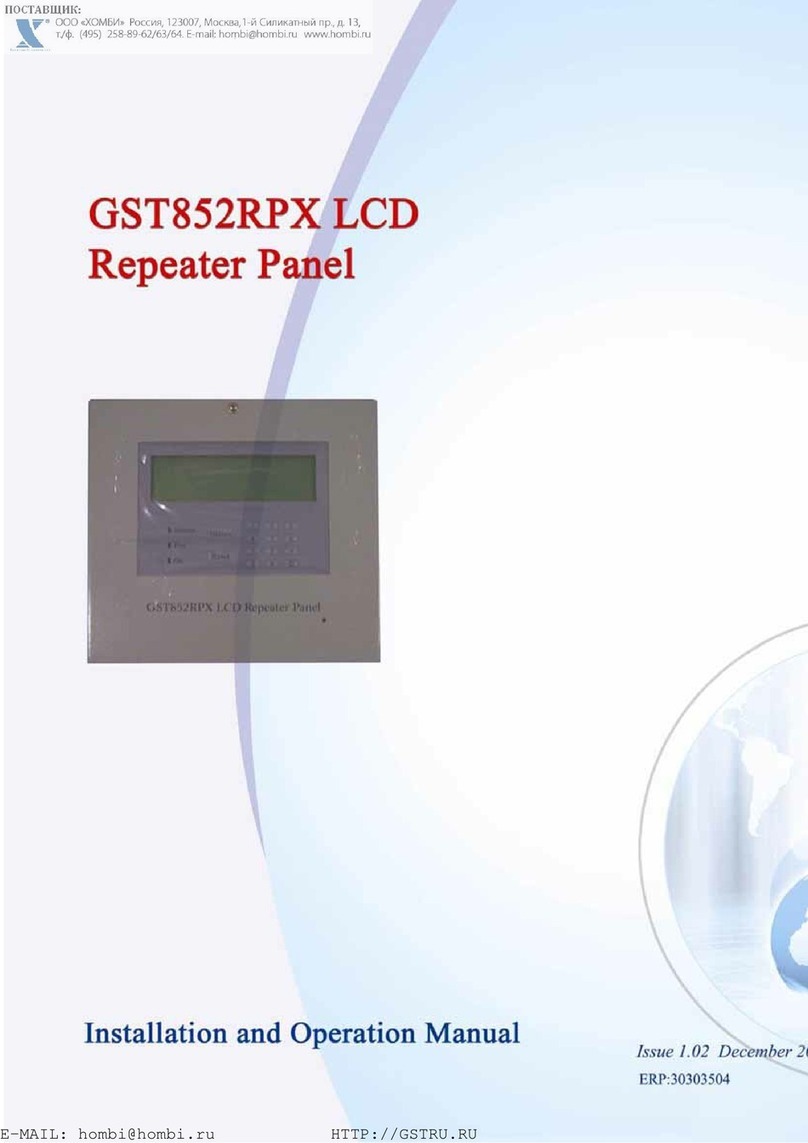
GST
GST 852RPX Installation and operation manual
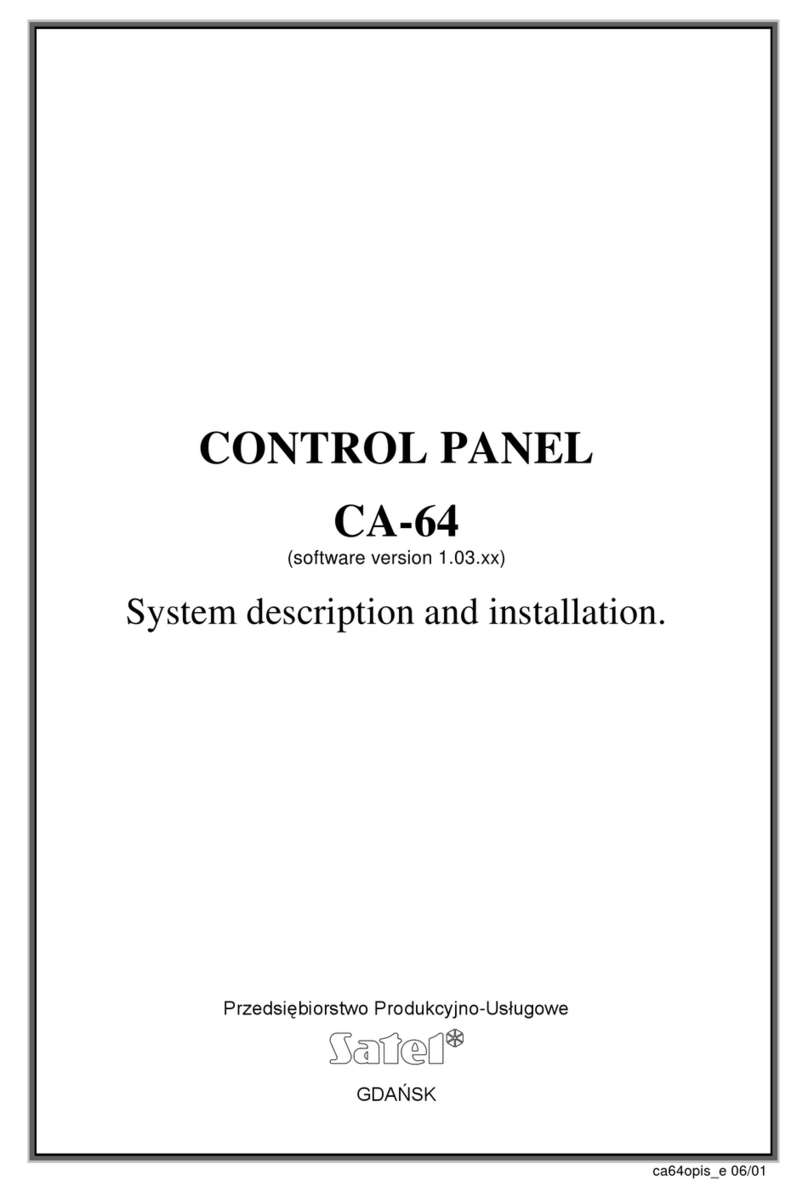
Satel
Satel CA-64 PTSA System description and installation
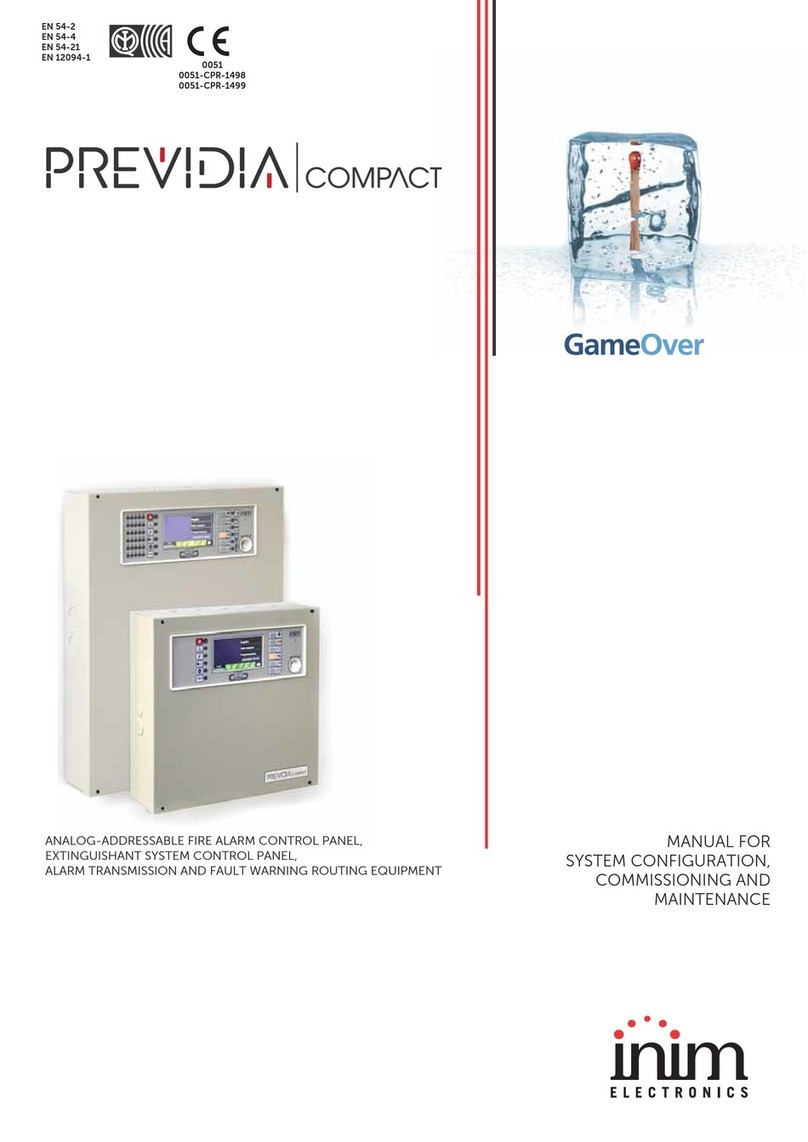
INIM Electronics
INIM Electronics Previdia Compact Manual for system configuration, commissioning and maintenance
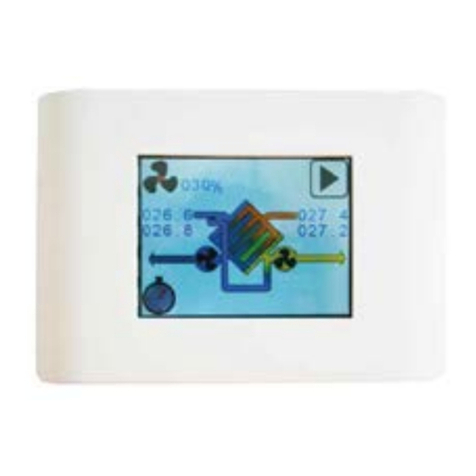
Casals
Casals CTRL-DPH User manual and instructions
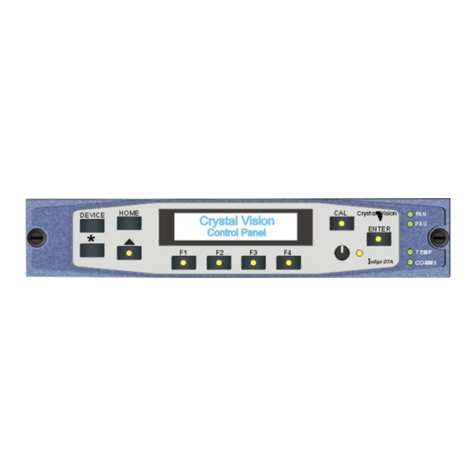
Crystal Vision
Crystal Vision Indigo DT user manual
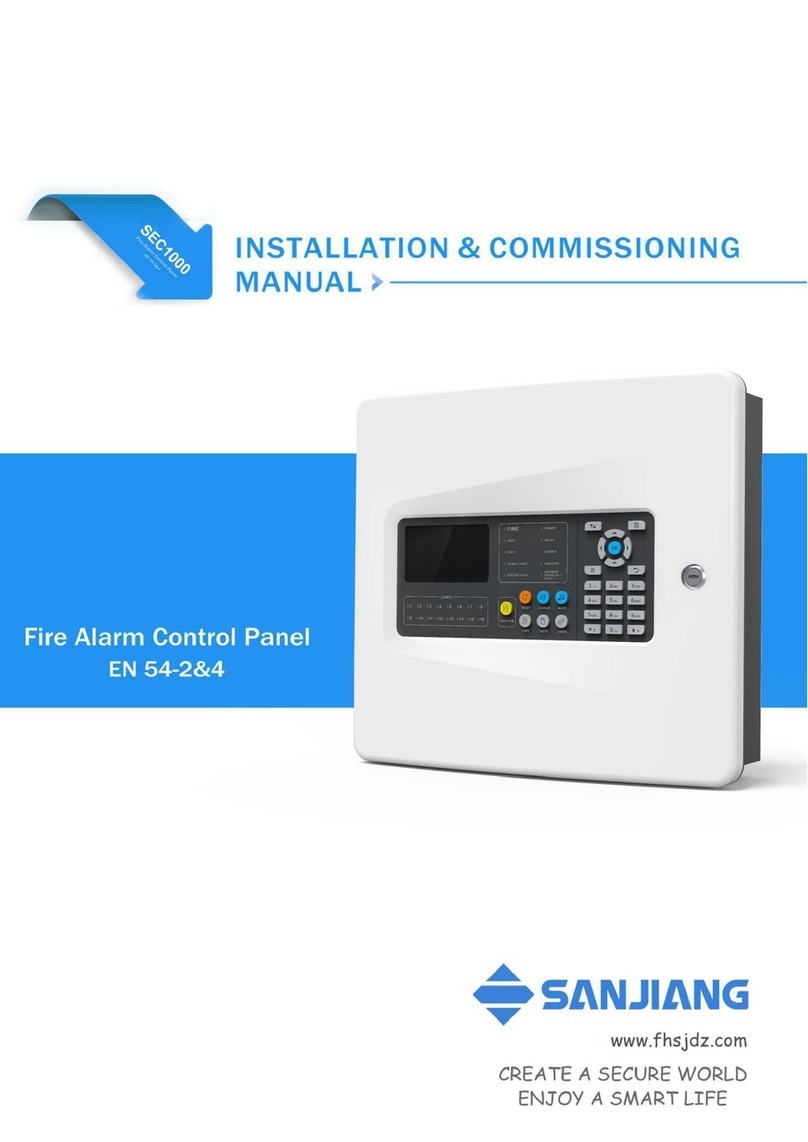
SANJIANG
SANJIANG SEC1000 Installation & commissioning manual
